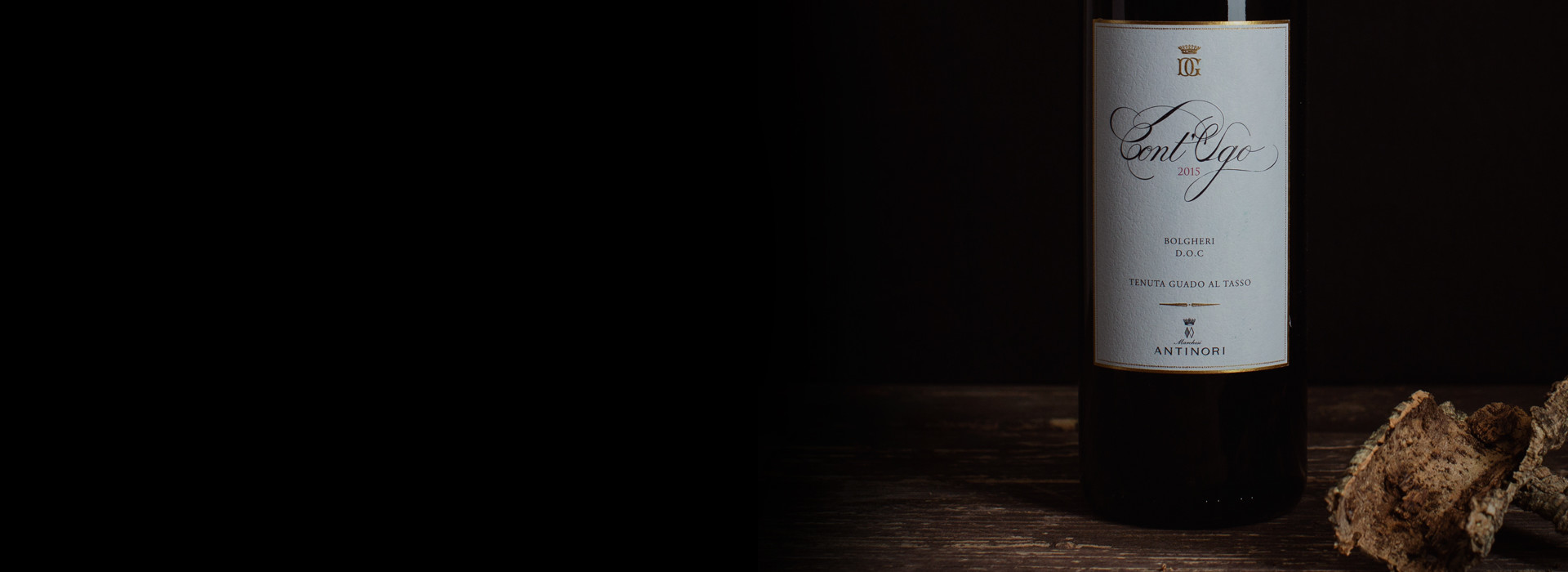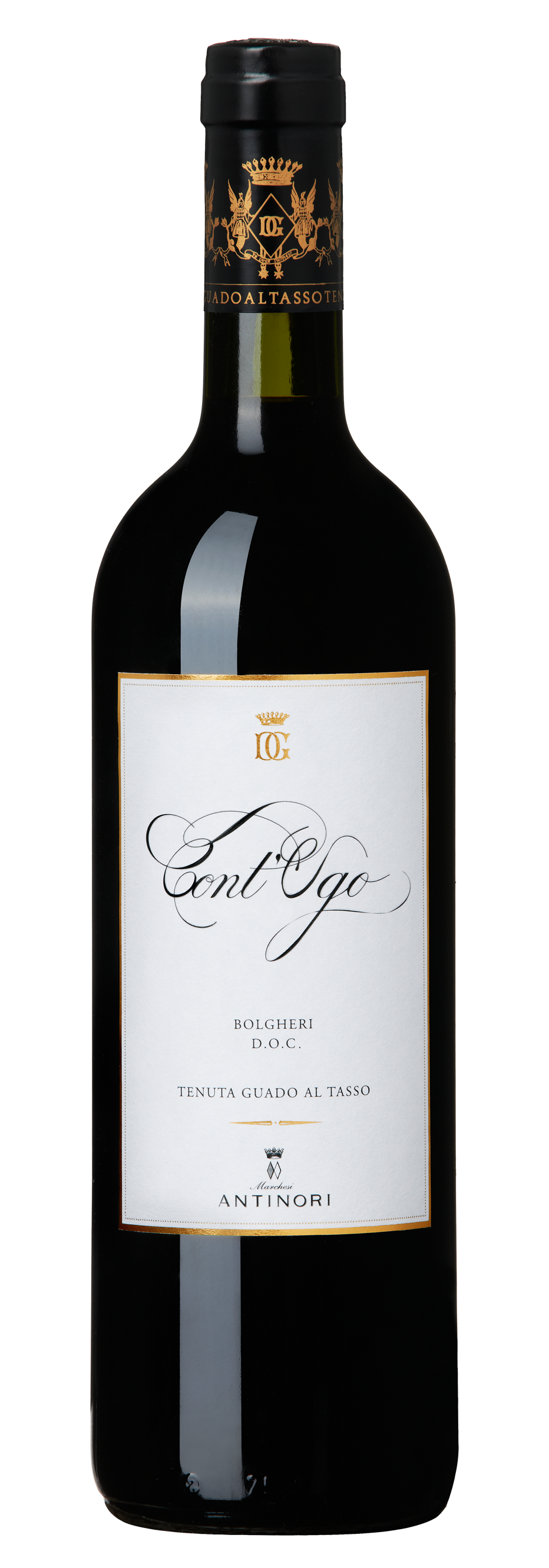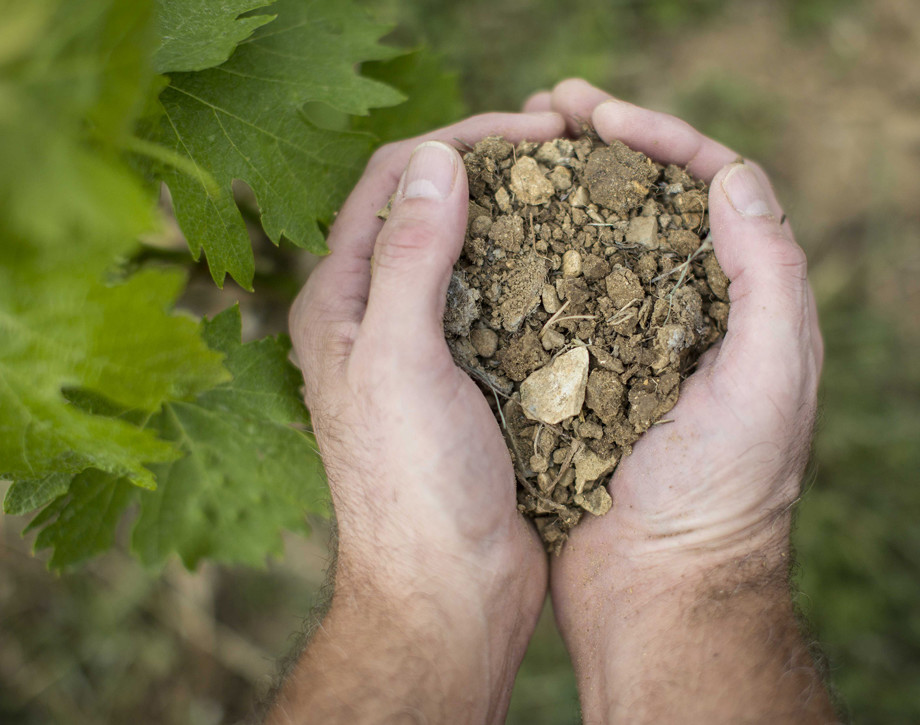Cont'Ugo

Climate
The 2020 growing season started with mild winter weather and scattered rainfall. Despite a sudden drop in temperatures in March and an unexpected frost at the end of the month, no significant damage was reported in Bolgheri. Halfway through April, temperatures were on the rise and spring proceeded normally encouraging excellent flowering and fruit set that took place between the end of May and beginning of June.Summer was hot and dry, uninterrupted by extreme heat events. September was dominated by higher-than-average temperatures up until the final week of the month when the weather turned cool and rainy; such conditions persisted until October. Harvesting activities began on September 3rd with the first selection of Merlot for Cont’Ugo and was completed on September 30th in the late-ripening vineyards where grapes were riper and more mature.
Vinification
After the grapes were hand harvested and carefully selected on sorting tables, the berries were transferred into temperature controlled stainless steel vats where alcoholic fermentation and maceration on the skins took place over a period of about 20 days. Fermentation temperatures were managed based on the ripeness of the grapes: lower temperatures were applied to preserve and enhance aromatic freshness while higher temperatures, up to 30 °C (86 °F), to boost extraction of phenolic compounds and enhance structure. The different batches were divided according to their individual characteristics and then transferred into barriques. Malolactic fermentation was completed by the end of the year. The finest batches were blended and transferred back into barriques, 10% first fill and 90% second fill, for a further 12-month period of aging, then bottled. Cont’Ugo was left to age in the bottle for an additional 3 months before being released for sale.
Historical Data
The Guado al Tasso estate is located in the small, but prestigious, Bolgheri appellation on the coast Tuscany’s Upper Maremma, some 60 miles (100 kilometers) to the southwest of the city of Florence. This appellation has a relatively short history (it was created in 1994) but can boast a worldwide fame as a reference point wine on the international scene. The estates covers an area of about 320 hectares (790 acres) planted to vines, in a splendid plain surrounded by hills known as “the Bolgheri amphitheater” for its particular geographical conformation. The Guado al Tasso vineyards consist principally of Cabernet Sauvignon, Merlot, Syrah, Cabernet Franc, Petit Verdot, and Vermentino grapes; this last cultivated with both with white and red varieties. They enjoy a mild climate due to the nearby presence of the Mediterranean Sea, constant breezes mitigate summer heat, and the rigors of winter clear the sky and maintain a high degree of solar light and radiation. Cont’Ugo is produced exclusively from Merlot grapes in order to interpret the territory of Bolgheri from a new perspective. The vineyards, situated at an altitude between 150 and 200 feet (45-60 meters) above sea level on clayey-loam soils prevalently of alluvial origin, gave Cont’Ugo great depth and complexity while conserving the fragrance and richness of fruit which are typical of Merlot.
Tasting Notes
Cont’Ugo 2020 in an intense ruby red color. The nose delivers intense aromas of small ripe red fruit accompanied by fresh balsamic notes of Mediterranean scrub. On the palate, a velvety entry is sustained by excellent richness of flavors persistent throughout the tasting, closing with a pleasantly fruity finish.

The Wine
Cont’Ugo is produced entirely with Merlot as a new interpretation of the Bolgheri territory. The vineyards grow at an altitude that varies between 45 and 60 meters (147/196 feet) above sea level on clay-loam soils that are of alluvial origin that give the wine deep complex notes while preserving the fragrance and freshness typical of Merlot berries.

Climate
The 2020 growing season started with mild winter weather and scattered rainfall. Despite a sudden drop in temperatures in March and an unexpected frost at the end of the month, no significant damage was reported in Bolgheri. Halfway through April, temperatures were on the rise and spring proceeded normally encouraging excellent flowering and fruit set that took place between the end of May and beginning of June.Summer was hot and dry, uninterrupted by extreme heat events. September was dominated by higher-than-average temperatures up until the final week of the month when the weather turned cool and rainy; such conditions persisted until October. Harvesting activities began on September 3rd with the first selection of Merlot for Cont’Ugo and was completed on September 30th in the late-ripening vineyards where grapes were riper and more mature.
Vinification
After the grapes were hand harvested and carefully selected on sorting tables, the berries were transferred into temperature controlled stainless steel vats where alcoholic fermentation and maceration on the skins took place over a period of about 20 days. Fermentation temperatures were managed based on the ripeness of the grapes: lower temperatures were applied to preserve and enhance aromatic freshness while higher temperatures, up to 30 °C (86 °F), to boost extraction of phenolic compounds and enhance structure. The different batches were divided according to their individual characteristics and then transferred into barriques. Malolactic fermentation was completed by the end of the year. The finest batches were blended and transferred back into barriques, 10% first fill and 90% second fill, for a further 12-month period of aging, then bottled. Cont’Ugo was left to age in the bottle for an additional 3 months before being released for sale.
Historical Data
The Guado al Tasso estate is located in the small, but prestigious, Bolgheri appellation on the coast Tuscany’s Upper Maremma, some 60 miles (100 kilometers) to the southwest of the city of Florence. This appellation has a relatively short history (it was created in 1994) but can boast a worldwide fame as a reference point wine on the international scene. The estates covers an area of about 320 hectares (790 acres) planted to vines, in a splendid plain surrounded by hills known as “the Bolgheri amphitheater” for its particular geographical conformation. The Guado al Tasso vineyards consist principally of Cabernet Sauvignon, Merlot, Syrah, Cabernet Franc, Petit Verdot, and Vermentino grapes; this last cultivated with both with white and red varieties. They enjoy a mild climate due to the nearby presence of the Mediterranean Sea, constant breezes mitigate summer heat, and the rigors of winter clear the sky and maintain a high degree of solar light and radiation. Cont’Ugo is produced exclusively from Merlot grapes in order to interpret the territory of Bolgheri from a new perspective. The vineyards, situated at an altitude between 150 and 200 feet (45-60 meters) above sea level on clayey-loam soils prevalently of alluvial origin, gave Cont’Ugo great depth and complexity while conserving the fragrance and richness of fruit which are typical of Merlot.
Tasting Notes
Cont’Ugo 2020 in an intense ruby red color. The nose delivers intense aromas of small ripe red fruit accompanied by fresh balsamic notes of Mediterranean scrub. On the palate, a velvety entry is sustained by excellent richness of flavors persistent throughout the tasting, closing with a pleasantly fruity finish.

Tenuta Guado Al Tasso
The Guado al Tasso estate is located in the small but prestigious Bolgheri DOC, on the coast of upper Maremma, about one hundred kilometers southwest from Florence. This appellation has a relatively recent history, DOC Bolgheri was approved in 1995 and since then it has become an internationally recognized reference point for the Italian and international winemaking arena. The estate covers an area of 320 hectares (790 acres) planted with vines, set in a beautiful plain encircled by rolling hillsides known as the "Bolgheri Amphitheatre" due to its particular shape. The vineyards are planted to Cabernet Sauvignon, Merlot, Syrah, Cabernet Franc, Petit Verdot and Vermentino. The nearby sea provides a mild climate with constant breezes that mitigate summer heat and alleviate harsh winter weather, maintaining a clear sky and a high level of sunlight exposure.

Soil
Alluvial in origin, soils vary from sandy-clay to silty-clay and in some areas the presence of very fine gravel called scheletro (also known as agglomerate from Bolgheri).


















